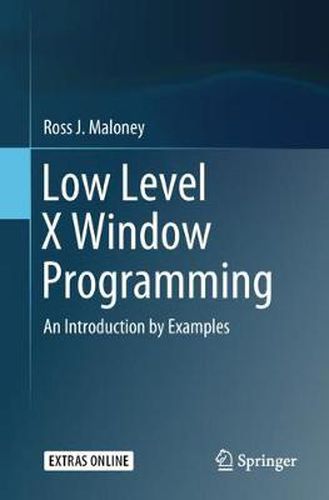Readings Newsletter
Become a Readings Member to make your shopping experience even easier.
Sign in or sign up for free!
You’re not far away from qualifying for FREE standard shipping within Australia
You’ve qualified for FREE standard shipping within Australia
The cart is loading…






This is the missing X Window book. While others have shown what the X Window system has available, this book shows how to convert this potential into working tools to fulfil your visualisation needs. It is of the show-me class of books.
The majority of the book covers Xlib, although a short coverage of Xcb is also given. Included are:
. The relationship between Xlib and the X Window protocol;
. All the basic Xlib topics are covered;
. Complete working programs with their results;
. Exercises to reinforce the material just covered.
A 9 part partition to building a complete X program is used throughout. This partitioning fosters the inclusion of all code necessary. All programs are written in C and are one to four pages in length. Open source programs with the occasional Postscript script are shown to provide support as needed. Throughout the examples consideration is given to using colour. The examples produce simple results with the aim of providing building blocks for application oriented codes.
The book is directed at graduate students and researchers who create computer code to visualise their data.
$9.00 standard shipping within Australia
FREE standard shipping within Australia for orders over $100.00
Express & International shipping calculated at checkout
This is the missing X Window book. While others have shown what the X Window system has available, this book shows how to convert this potential into working tools to fulfil your visualisation needs. It is of the show-me class of books.
The majority of the book covers Xlib, although a short coverage of Xcb is also given. Included are:
. The relationship between Xlib and the X Window protocol;
. All the basic Xlib topics are covered;
. Complete working programs with their results;
. Exercises to reinforce the material just covered.
A 9 part partition to building a complete X program is used throughout. This partitioning fosters the inclusion of all code necessary. All programs are written in C and are one to four pages in length. Open source programs with the occasional Postscript script are shown to provide support as needed. Throughout the examples consideration is given to using colour. The examples produce simple results with the aim of providing building blocks for application oriented codes.
The book is directed at graduate students and researchers who create computer code to visualise their data.